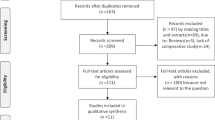Abstract
Background
Patients with periampullary cancers may not be suitable for curative resection due to locally advanced disease, metastases, or poor health. Biliary stenting and surgical bypass are utilized for symptom control, but the true benefit of one technique over the other is not clear.
Methods
A retrospective analysis of case records was undertaken of patients with periampullary (pancreatic head/uncinate process, distal bile duct, and ampulla of Vater and surrounding duodenum) malignancy treated between June 2004 and June 2010 in a tertiary center by palliative biliary stenting or palliative surgical bypass.
Results
Of the 69 patients included in the analysis, combined biliary and gastric bypass was performed on 28, while 41 underwent biliary stent (metallic, n = 39) insertion. Patients undergoing stenting were significantly older and less likely to be offered chemotherapy than those from the surgical bypass group. Overall, there were significantly more complications in the stent insertion group (85 %) than the surgical bypass group (36 %) (p = 0.003). The stent group required significantly more subsequent procedures than the surgical bypass group. Metal stent obstruction occurred in 16 of 39 (41 %) patients, with a median stent patency of 224 days. The overall median survival of patients in this study was 7 months with no significant difference between the groups (p = 0.992). The presence of metastases at presentation was the only independent factor associated with decreased survival.
Conclusion
There was no survival difference between stenting vs. surgical bypass for palliation of periampullary cancer. There was, however, a high rate of stent occlusion and need for repeat procedures in patients treated by metal stenting, suggesting that stenting may be best suited to patients predicted as having the shortest survival.


Similar content being viewed by others
References
Sohn TA, Yeo CJ, Cameron JL, et al. Resected adenocarcinoma of the pancreas-616 patients: results, outcomes, and prognostic indicators. J Gastrointest Surg. 2000;4:567–79.
Mukherjee S, Kocher HM, Hutchins RR, Bhattacharya S, Abraham AT. Palliative surgical bypass for pancreatic and peri-ampullary cancers. J Gastrointest Cancer. 2007;38:102–7.
Rhodes M, Nathanson L, Fielding G. Laparoscopic biliary and gastric bypass: a useful adjunct in the treatment of carcinoma of the pancreas. Gut. 1995;36:778–80.
Siddiqui A, Spechler SJ, Huerta S. Surgical bypass versus endoscopic stenting for malignant gastroduodenal obstruction: a decision analysis. Dig Dis Sci. 2007;52:276–81.
Akinci D, Akhan O, Ozkan F, et al. Palliation of malignant biliary and duodenal obstruction with combined metallic stenting. Cardiovasc Interv Radiol. 2007;30:1173–7.
Mann CD, Thomasset SC, Johnson NA, et al. Combined biliary and gastric bypass procedures as effective palliation for unresectable malignant disease. ANZ J Surg. 2009;79:471–5.
Maosheng D, Ohtsuka T, Ohuchida J, et al. Surgical bypass versus metallic stent for unresectable pancreatic cancer. J Hepatobiliary Pancreat Surg. 2001;8:367–73.
Nuzzo G, Clemente G, Cadeddu F, Giovannini I. Palliation of unresectable periampullary neoplasms. “Surgical” versus “non-surgical” approach. Hepatogastroenterology. 2004;51:1282–5.
Taylor MC, McLeod RS, Langer B. Biliary stenting versus bypass surgery for the palliation of malignant distal bile duct obstruction: a meta-analysis. Liver Transpl. 2000;6:302–8.
Wong YT, Brams DM, Munson L, et al. Gastric outlet obstruction secondary to pancreatic cancer: surgical vs endoscopic palliation. Surg Endosc. 2002;16:310–2.
Smith AC, Dowsett JF, Russal RCG. Randomised trial of endoscopic stenting versus surgical bypass in malignant low bile duct obstruction. Lancet. 1994;344:1655–60.
Tani M, Kawai M, Hirono S, et al. A pancreaticoduodenectomy is acceptable for periampullary tumors in the elderly, even in patients over 80 years of age. J Hepatobil Pancreas Surg. 2009;16:675–80.
Yoon WJ, Lee JK, Lee KH, et al. A comparison of covered and uncovered Wallstents for the management of distal malignant biliary obstruction. Gastrointest Endosc. 2006;63:996–1000.
Soderlund C, Linder S. Covered metal versus plastic stents for malignant common bile duct stenosis: a prospective, randomized, controlled trial. Gastrointest Endosc. 2006;63:986–95.
Mumtaz K, Hamid S, Jafri W. Endoscopic retrograde cholangiopancreaticography with or without stenting in patients with pancreaticobiliary malignancy, prior to surgery. Cochrane Database Syst Rev. 2007;3:CD006001.
Gaidos JK, Draganov PV. Treatment of malignant gastric outlet obstruction with endoscopically placed self-expandable metal stents. World J Gastroenterol. 2009;15:4365–71.
Acknowledgments
The authors acknowledge the contribution of Mr. Vin Surendran for developing and maintaining a prospective surgical database that was accessed for this study.
Author information
Authors and Affiliations
Corresponding author
Rights and permissions
About this article
Cite this article
Nikfarjam, M., Hadj, A.K., Muralidharan, V. et al. Biliary stenting versus surgical bypass for palliation of periampullary malignancy. Indian J Gastroenterol 32, 82–89 (2013). https://doi.org/10.1007/s12664-012-0274-1
Received:
Accepted:
Published:
Issue Date:
DOI: https://doi.org/10.1007/s12664-012-0274-1




